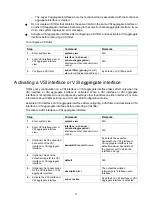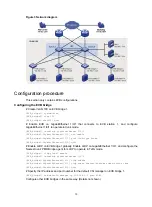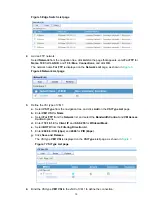
12
Displaying and maintaining EVB
Execute
display
commands in any view and the
reset
command in user view.
Task Command
Display CDCP negotiation
information.
display evb cdcp
[
interface
interface-type interface-number
]
Display S-channel EVB TLV
negotiation information.
display evb evb-tlv
[
interface
interface-type
{
interface-number
|
interface-number
:
channel-id
} ]
Display S-channel information.
display evb s-channel
[
interface
interface-type interface-number
]
Display EVB summary.
display
evb
summary
Display VSI interface information.
display evb vsi
[
verbose
] [
interface
interface-type
{
interface-number
|
interface-number
:
channel-id
|
interface-number
:
channel-id
.
vsi-local-id
} ]
Display information about an
S-channel interface, an S-channel
aggregate interface, a VSI interface,
or a VSI aggregate interface.
display
interface
[ {
s-channel
|
schannel-aggregation
}
[
interface-number
:
channel-id
|
interface-number
:
channel-id
.
vsi-local-id
] ] [
brief
[
description
|
down
] ]
Clear statistics for an S-channel
interface, an S-channel aggregate
interface, a VSI interface, or a VSI
aggregate interface.
reset counters interface
[ {
s-channel
|
schannel-aggregation
}
[
interface-number
:
channel-id
|
interface-number
:
channel-id
.
vsi-local-id
] ]
EVB configuration example
Network requirements
As shown in
, the Layer 2 network of a data center contains two switches that form an IRF
fabric, four EVB bridges, and four EVB stations. They communicate within VLAN 100.
Create VM 1 with the MAC address 0050-5684-21C7 on EVB station 1, and configure VM1 as the
FTP server with a CIR of 2048 kbps and a PIR of 4096 kbps. Only the R&D center is allowed to
access the network.








































